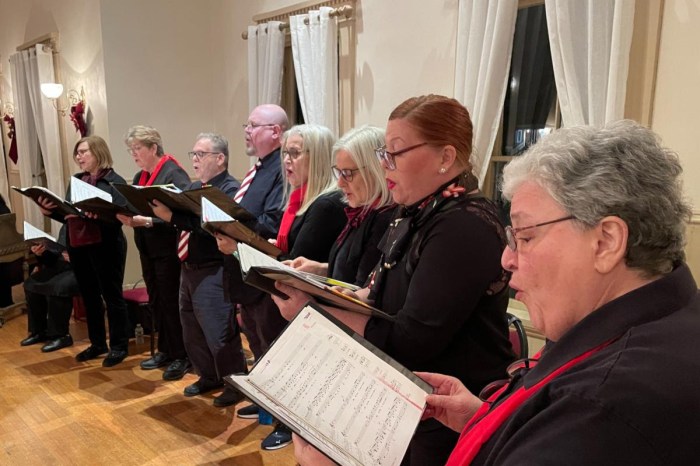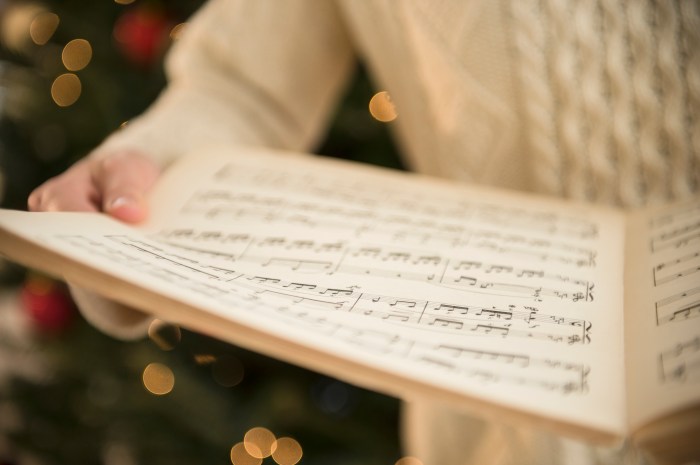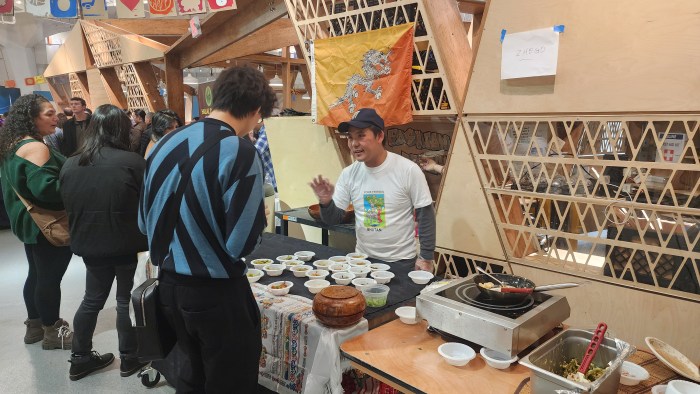By Tammy Scileppi
Some people walk to stay in shape, others to clear their heads, or to support a cause they believe in.
But Brooklyn-based conceptual landscape artist Matthew Jensen has turned walking into an art form.
He calls his current project, “A Collection of Walks (or How to Get to the Earth).”
Think of it as a cosmic journey to Queens’ iconic Unisphere from points beyond.
Jensen, 35, has been involved with projects about New York City landscapes for 10 years, and a number of his recent works have explored public parks.
“Everything I do is about public landscapes in some way and I have a multi-disciplinary practice that combines photography, sculpture, found objects and walking,” he said. “What makes anything conceptual is that the idea is as important if not more important than the final piece.”
The traveling artist has once again embraced walking as a process — this time in Queens — and said he likes to design projects around this meditative action.
“It’s a way to slowly experience a place,” Jensen said. “Along my walks I collect objects, take pictures, have little adventures and write a bit.”
When Jensen conjured up “A Collection of Walks,” he embarked on an interesting journey inspired by the cosmos. This week, he will be completing all 14 of his mostly solo walks, which started at different locations across the city.
And all roads have led to the Unisphere — the largest sculpture of the earth on the planet. Jensen said he chose it because it is one of the most important landmarks in the city.
“It’s an icon for so many and in the memories of so many people who visited the second World’s Fair (in 1964),” he said. “It’s what pulls tourists and locals to the heart of the park.”
So, why 14 walks? The answer may surprise you.
To understand the thought process behind Jensen’s cosmic concept, you first have to embrace the notion that his earthly walks, facilitated by Google Earth, are symbolically linked to an inscription on the Voyager spacecraft launched in 1977.
When Voyagers I and II were sent out to distant stars and galaxies light years away, both carried the famous Golden Record. The Voyager Golden Records are gold-encrusted phonograph records that contain sounds and images selected to portray the diversity of life and culture on Earth, and are intended for any intelligent extraterrestrial life form, or for future humans, who may find them.
“One of the icons engraved on the records is a map to our sun using 14 pulsars throughout the Milky Way as outlying points. So, if the right aliens find the record someday, they might be able to locate Earth, for better or worse,” Jensen said. “I chose those starting points so their dispersal would resemble the icon on the Golden Record.”
Since he wanted to create a project about walking to the park, Jensen replaced the 14 pulsars with 14 locations throughout the city.
Many of the starting points — such as LaGuardia and JFK airports, MacNeil Park and Utopia — are in Queens, but he also walked from Cypress Avenue in the Bronx, Lake Success on Long Island and Gateway Plaza in Manhattan.
With that idea in mind, Jensen moved forward with his month-long stint as Queens Museum’s artist-in-residence, using ArtBuilt’s Studio in the Park from July 16 through this weekend.
“It seemed like a dream come true to have a mobile studio at Flushing Meadows Park and be able to develop my new project there,” he said.
Eventually, all of Jensen’s experiences and findings will become the material for works of art later on.
“Ideally, I create a work that encourages others to walk,” he said.
Once he completes this project, he will start working on a unique map — a walking guide that will mirror his own travels and help folks who want to journey from those 14 locations to the park.
Queens Museum will host an Open Studio and celebratory cookout Saturday, and visitors will be able to come by and view Jensen’s photos, then browse through his cabinet of curiosities: a remarkable collection of 5,000 found objects gathered during his walks.
“I’m just hoping to instigate a tradition of walking to it from points beyond the subways and parking lots,” he said. “Sometimes I’m caught up in magical green landscapes, other times I’m walking long, hot, dusty routes through industrial zones. For these particular walks, I’ve been keeping the idea of ‘cosmic’ on my mind and it’s led me to find some really odd objects and photograph some interesting scenes: beautiful landscapes, sometimes awful garbage-strewn coastlines, street scenes and a few randoms.”
Jensen’s travels have included “constant wanderings and fun and enlightening walks” throughout Flushing Meadows Corona Park with locals and park experts.
“The walks also brought me through all the surrounding neighborhoods. A real highlight has been finding so many quiet, hidden trails and paths through Kissena Corridor, Alley Park and Alley Pond, Cunningham and Highland parks, and Udall’s Cove,” he said. ”Natural landmarks, like lakes and ridgelines and coastal inlets do a fantastic job of preserving and exhibiting history, so I always try to weave through as many as possible.”
Jensen said walking around in the Iron Triangle (Willets Point) was “amazing and mind-blowing. I know it’s an environmental situation, but the amount of activity, number of people working there, the mismatched architecture and gritty streets make for an unforgettable atmosphere.”
Walking through so many cultural zones with different signs, food, sounds and smells was a lot of fun, too, he said, noting that his walks — between four and 12 miles long — are not about endurance.
And Jensen’s shortest walk to the Unisphere — from the 111th Street stop on the No. 7 train in Corona — was one of the most important because it is the route many visitors and many more locals take to get into the park.
“In some ways, it has provided the most material because I have gotten to know it so well,” he said.
In the weeks following his residency, Jensen said he will be spending a little more time digging through old maps and reading local histories. Jensen’s walking guide will mix history, observations and practical tips that would come in handy along the route.
“Most importantly, it’s evidence that walking through Queens is a fantastic experience. It has been really great so far,” he said, noting that he has some pretty amazing and strange things at the moment. But the most sensational is a Spanish real (colonial coin) from 1746 that he discovered in the dirt at a coastal park. It is the most treasure-like thing he has ever found.
“Queens Museum always comes up with the most creative projects, and this one is a perfect example. Flushing Meadows Corona Park is really diverse in terms of flora and fauna, while its surrounding neighborhoods are really diverse in terms of demographics and housing stock,” Queens Tourism Council Director Rob MacKay said. “Then you have a zoo, two museums, a theater, a tennis facility, and a carousel. I can’t wait to see what this artist, Matthew Jensen, finds on his walks, and how he chooses to present those findings. I’m in the area almost every day, and I’m sure Jensen will open my eyes to some new quirks.”
If You Go
A Collection of Walks (or How to Get to the Earth) closing reception
When: Saturday, Aug. 15, from 3 pm – 7 pm
Where: Queens Museum’s Mobile Studio, Flushing Meadows Corona Park
Cost: Free
Contact: (718) 592-9700
Website: www.queen



































